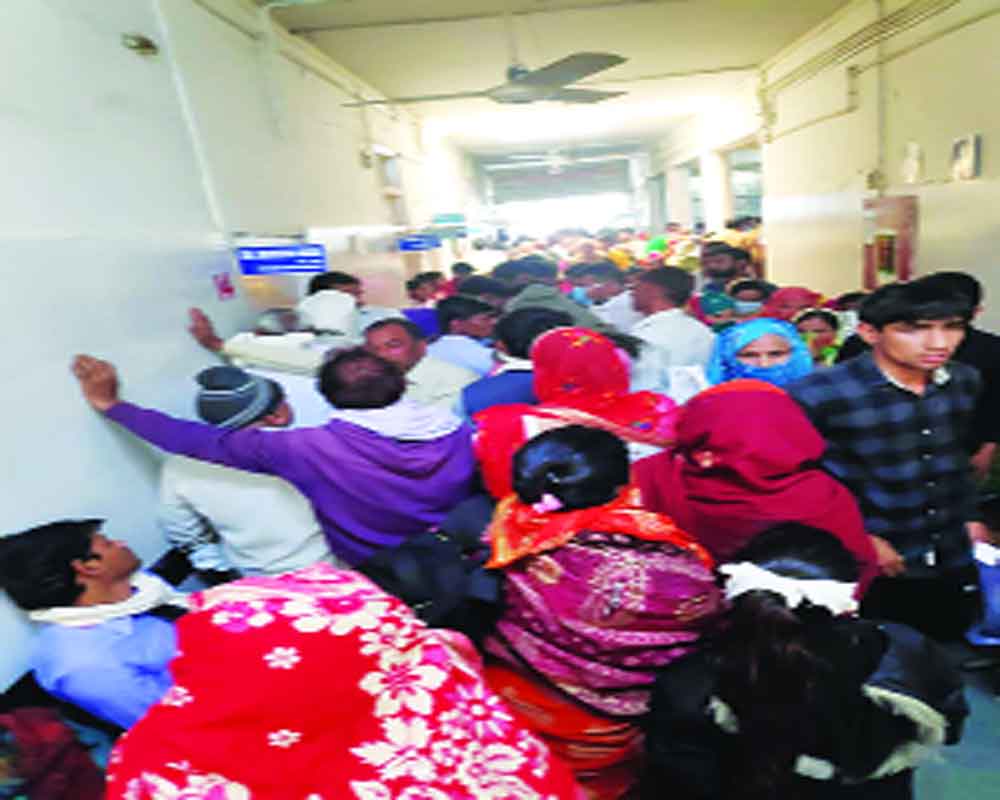Data passing through the hospital systems and databases must be digitised and harmonised to truly transform the healthcare infrastructure
Reports of shortages of hospital beds, ventilators, medical equipment and doctors and nurses to cope with growing cases of COVID-19 infections have thrown into sharp focus the need to accelerate digital transformation of healthcare infrastructure worldwide.
Modern medicine has been enriched by genomics, telemedicine, virtual reality for surgery and many bio-pharmaceutical advances. But behind the many medical advancements, true digital transformation of health infrastructure — hospitals, blood and vaccine banks, centres for dialysis, ambulatory surgery, imaging and radiology — is slow.
Unlike for other sectors, digital transformation to enable Internet of Things (IoT), 5G connectivity, and artificial intelligence and machine learning (AI/ML) is much more complex for healthcare.
Healthcare infrastructure innovation has been and remains curtailed by three main issues: firstly, compliance with regulatory standards at national and international levels; secondly, multiple forms of medical data, from patient records to X-rays, CT scans and other analogue or digital data; and thirdly, reluctance to change which prevents a clear digital dashboard to allow administrators to respond, plan and predict in real time.
Many hospitals with sophisticated equipment have yet to fully capture and update medical records to enable clinical decision support and real-time hospital workflow, let alone combine them seamlessly with long-term care and disease management.
How can planners and administrators improve information technology (IT) infrastructure to prepare for a true digital transformation for the healthcare sector? Several key steps can kick-start or accelerate the process. The first is to build or enable real-time data capture at every touchpoint of healthcare hardware. This means installing sensors, and embedding IoT and high-speed communication throughout each facility down to the last piece of equipment.
The second is to break down information silos once and for all. Data passing through the hospital systems and databases must be digitised, harmonised and shared, from patient records, X-rays and CT scans to data on the functioning of each piece of equipment and machinery within the infrastructure.
This roadblock has eluded decades of effort by IT consultants and systems integrators. A protocol of “golden data” in a common format will enable visibility of the entire healthcare enterprise.
Third, the same visibility can facilitate interoperability of different healthcare systems — electronic patient health records can be analysed alongside Covid-19 infection trends and the demand for vaccines and the cold-chain infrastructure needed to store or deliver them.
Fourth, healthcare assets, be it CT scanners, operating rooms or ventilators, have to be tracked on usage and location levels. This can help predict breakdowns, plan for maintenance and help the next shift of medical staff to locate them.
Fifth, such tracking will support more vital C-suite decisions such as scenario planning which can calibrate potential equipment shortage, availability of spares, and service-level agreements with suppliers with hospital manpower planning. By standardising protocols for maintenance — helped by cloud-enabled real-time data — productivity will improve.
Sixth, there are lessons to be drawn from a concept known as inventory technical management practised by MRO service providers. Those who are more digitally enabled have upscaled to the next level — flexible pooling of inventory to prevent duplication and to share hardware more intelligently.
Finally, the guardians of healthcare hardware can take tentative steps in AI/ML without sacrificing medical outcomes. These include sensors that can monitor health data of each patient more frequently than checks by nurses, and the use of chatbots to allow nurses or junior doctors to ask questions when certain patient symptoms occur or to check when a piece of equipment needs to be sent for servicing.
Through AI/ML, healthcare hardware can be “trained” to self-correct. It can learn prescriptive maintenance through protocols that can predict failures and recommend actions to take. Over time, each major piece of equipment can instruct itself on when to prepare for maintenance, the possible risks, and the pre-emptive measures it should take.
Covid-19 has triggered a once-in-decades shift in the thinking behind healthcare administration. It is time for the hospital to get out of the sick bed and embrace digital transformation.
(The writer is President and Head of ERP Solutions, Ramco Systems. The views expressed are personal.)


























